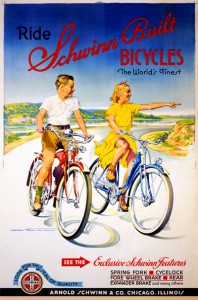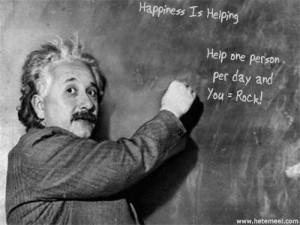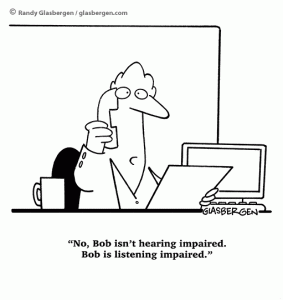The Importance of Showing Up

Finally, Dana came inside exhausted and frustrated. Christopher Reeve said to his wife, “Let me try.” He rolled his wheelchair gently down the ramp outside and onto the driveway where his son was wiping away tears. Christopher spoke to his son slowly. Since the accident his voice had become soft and measured. He told Will to place both hands on the handlebars and hold them steady. He explained by doing this the bike wouldn’t shake as much. He told Will to look up, far ahead, to where he was going and not down at the pedals or the front wheel. He told his son to first place his right foot on the pedal and his left foot on the ground, prepared and poised to push hard.
Will froze. Then Christopher reminded his son that he would never let him do anything too scary or dangerous – that riding a bike was something he knew Will could do. He told Will he was going to count to three, and on three, it was time to go. Christopher counted slowly and when he reached three, Will pushed off hard and rode down and around the driveway. The first time he circled back, his face was a mask of concentration and focus, and the second time around his face only reflected joy.
In his book, Nothing is Impossible, Christopher Reeve writes that before the accident that left him paralyzed he was a whirlwind of activity. He constantly took his family sailing, horseback riding, traveling, hiking and adventuring around the world. He writes that he never really asked if they wanted to go, he just took them. And after the accident he learned to listen. He learned to speak to them where they were, at their level, with a deep sense of empathy.
Christopher writes that prior to his accident he would not have believed that he could teach his son to ride a bike simply by talking to him. Teaching was about showing, demonstrating, and leading the way. But during his recovery process, he learned the power of conversations, words, intention and meeting people at an intersection of where they are ready to learn. Because each day the physicians and care-takers around him would introduce an idea or an activity that he was ready to tackle, or else it would fall unnoticed. It’s all about introducing learning opportunities when people are ready to learn.
An important nuance of excellent leaders is that they have the capacity to recognize when someone else is ready to go to the next level – ready to take on a new challenge. And instead of doing it for them, encourage their heart and prepare them to make that leap. And it starts by simply showing up and being willing to share your skills and experience.



 The profession of radiology has been progressing over the past fifty years in terms of how people are trained, the equipment and technology used, and immediacy of feedback.
The profession of radiology has been progressing over the past fifty years in terms of how people are trained, the equipment and technology used, and immediacy of feedback.  I have a confession. I used to be a tyrant in the morning. Tyrant might be an exaggeration (or not), but my recollection is that while getting the kids ready for school I spent all of my energy cajoling, prodding, pleading, scolding, and sometimes ranting at my kids to get ready – to put on their shoes, eat their breakfast, brush their teeth, get dressed, put their lunch in their backpacks…, because the bus is coming! My wife has a different, and more effective style, but on my mornings to handle bus time I would conduct diatribes on the inevitability of the bus, and harangue them that unlike procrastinating getting in the car, the bus is coming at an appointed time and they needed to hurry up!
I have a confession. I used to be a tyrant in the morning. Tyrant might be an exaggeration (or not), but my recollection is that while getting the kids ready for school I spent all of my energy cajoling, prodding, pleading, scolding, and sometimes ranting at my kids to get ready – to put on their shoes, eat their breakfast, brush their teeth, get dressed, put their lunch in their backpacks…, because the bus is coming! My wife has a different, and more effective style, but on my mornings to handle bus time I would conduct diatribes on the inevitability of the bus, and harangue them that unlike procrastinating getting in the car, the bus is coming at an appointed time and they needed to hurry up! My wife and I often like to go running, sometimes together, sometimes not. Recently we were home on a lazy Sunday with our seven year old daughter and it was getting late in the day. We were losing daylight for us to trade runs, one after the other. So I suggested our daughter, Annie, go with us on her bicycle. And so she did.
My wife and I often like to go running, sometimes together, sometimes not. Recently we were home on a lazy Sunday with our seven year old daughter and it was getting late in the day. We were losing daylight for us to trade runs, one after the other. So I suggested our daughter, Annie, go with us on her bicycle. And so she did. First ask yourself, “Do I behave with high integrity?” The majority of us would respond that yes, we do.
First ask yourself, “Do I behave with high integrity?” The majority of us would respond that yes, we do.  I was listening to a podcast yesterday of Adam Grant talking about his new book
I was listening to a podcast yesterday of Adam Grant talking about his new book 